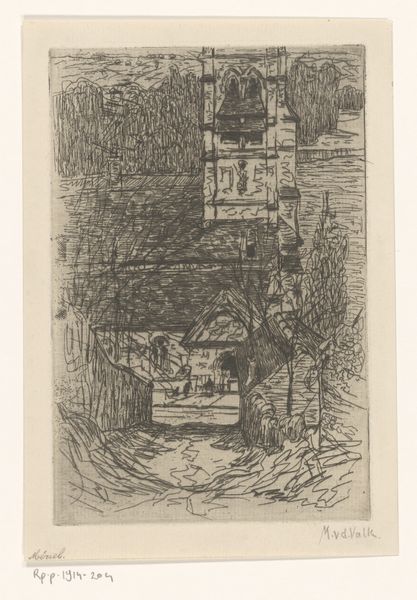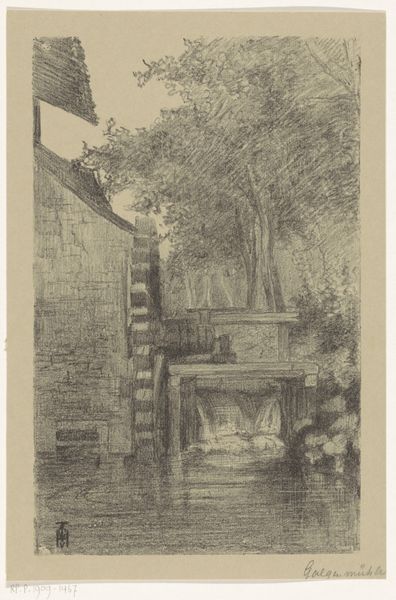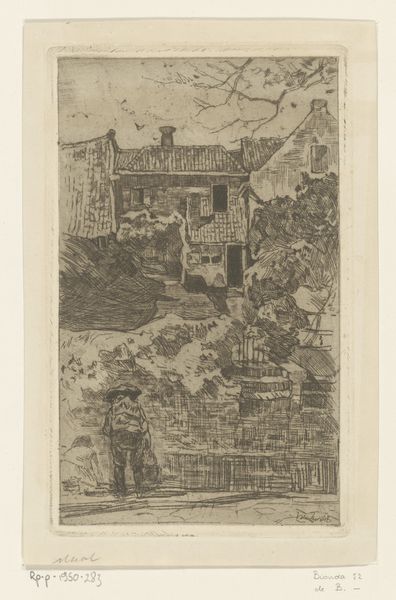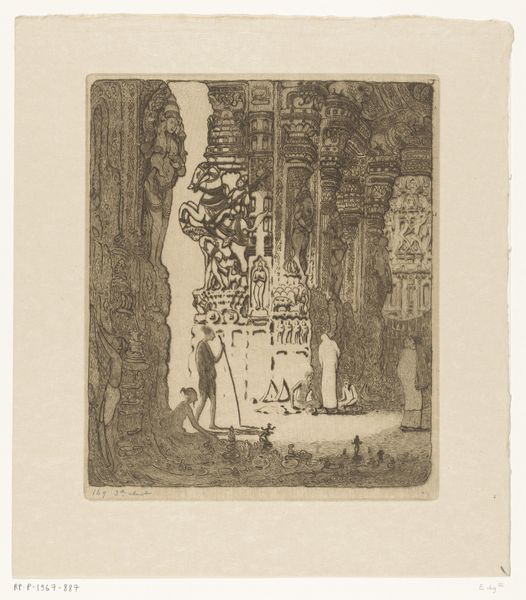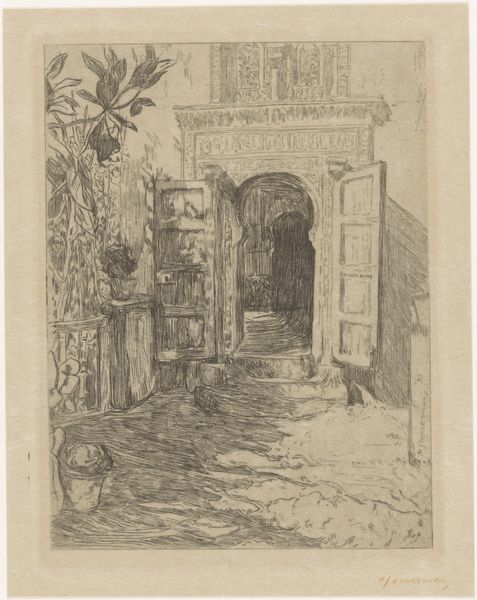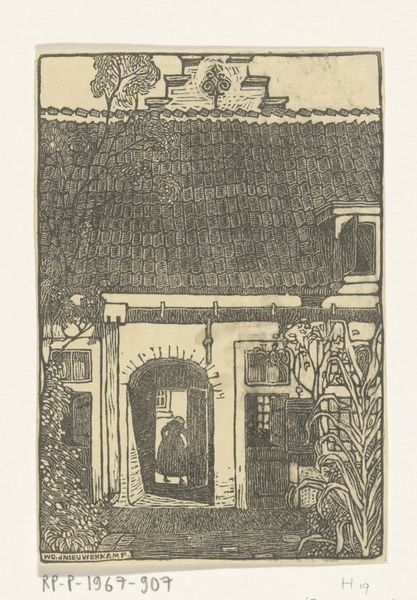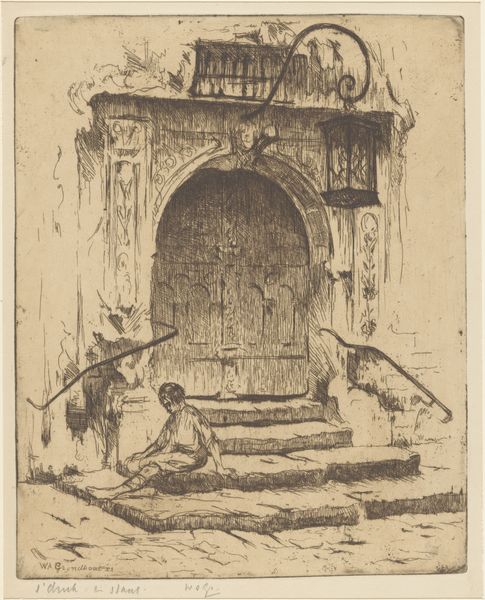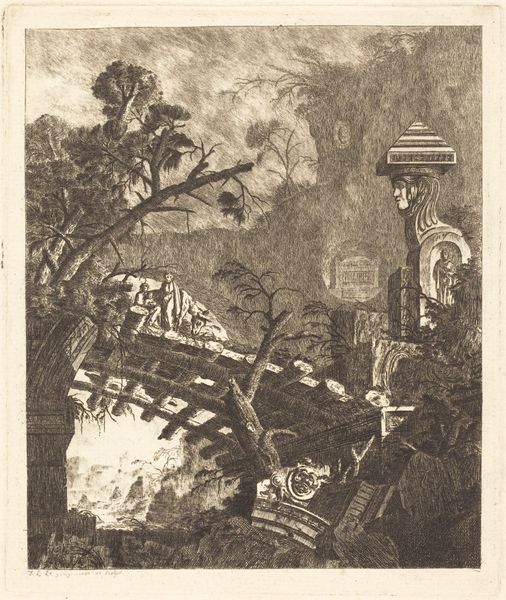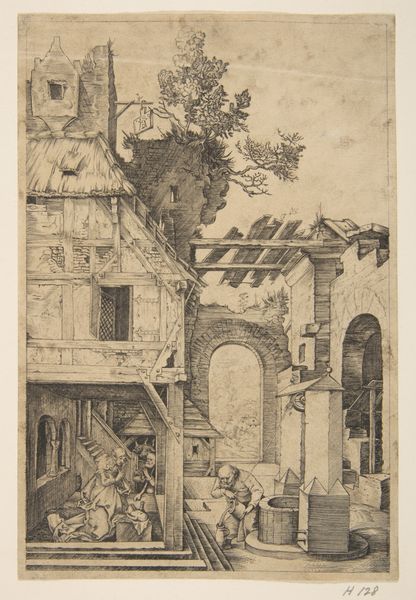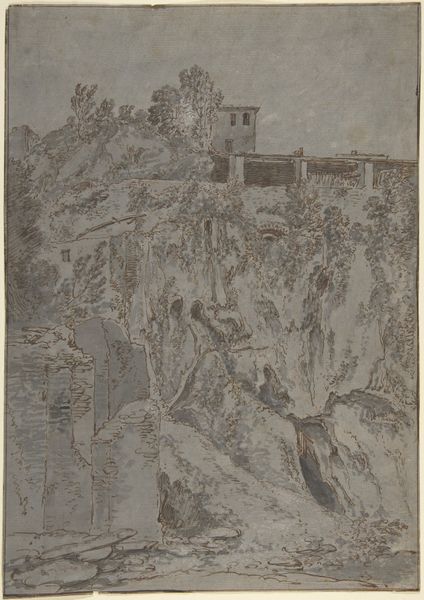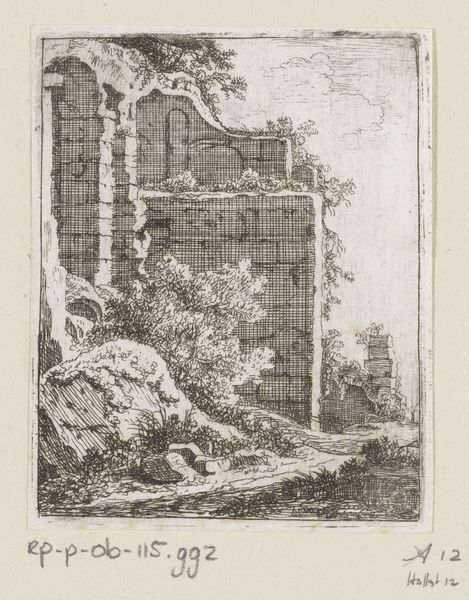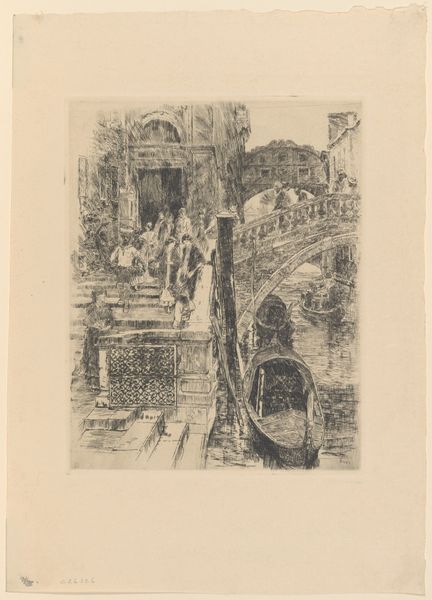
drawing, print, etching
#
drawing
# print
#
etching
#
landscape
#
personal sketchbook
#
ink drawing experimentation
#
cityscape
#
realism
Dimensions: height 199 mm, width 149 mm
Copyright: Rijks Museum: Open Domain
Hendrik Johannes Haverman created this etching of a Moroccan doorway, sometime around the late 19th century. Etching is an indirect printmaking technique. The artist coats a metal plate with a waxy, acid-resistant substance, then scratches an image into this ground with a needle. When the plate is immersed in acid, the exposed lines are etched into the metal. Ink is then applied to the plate, and the surface wiped clean, leaving ink only in the etched lines. Finally, paper is pressed against the plate, transferring the image. Haverman was part of a wave of European artists who looked to North Africa for new inspiration, and to capture this scene, he uses cross-hatching and fine lines, creating depth and shadow. The repetitive action of drawing and etching the image allows Haverman to capture the texture of the stone walls, plants, and the latticework of the door. The print captures a moment in time, preserving a scene and making it reproducible. By focusing on process, material, and context, we can see that even a seemingly straightforward image can reveal complex histories of labor, cultural exchange, and artistic innovation, inviting us to question traditional hierarchies between art and craft.
Comments
No comments
Be the first to comment and join the conversation on the ultimate creative platform.
